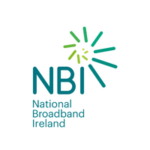Rural WiFi Internet Speed Test
Check the speed of
your internet
Unhappy with your speed?
Ireland’s leading broadband providers advertise lightning-fast speeds of 100Mbps, 500Mbps, 1,000Mbps and now offer 2,000Mbps. But there’s a catch. These advertised speeds only refer to the maximum speed possible, they are not a guarantee, as broadband is extremely dependant on a number of different factors.
How can I check my broadband speed?
It’s always useful to be able to test the speed of your broadband connection, especially if you feel like it is underperforming. The good news is that testing your broadband speed is really easy to do!
Simply click the button labelled ‘Start’. A broadband speed test will be performed and give you a live reading of your current download speed.
What do my results mean?
The most important result is the download speed. This is the rate at which your device is able to access content from the internet.
So, a high download speed will allow you to load internet pages instantaneously and enjoy online video streaming without buffering. On the other hand, a low download speed will leave you with long load times and pixelated or laggy video streams.
Your upload speed measures the rate at which you are able to add content to the internet or send messages, pictures and videos to others. Upload speeds tend to be a lot slower than download speeds since most of us do much less uploading than downloading. So, don’t worry if your download and upload speeds are vastly different.
Ping, which is measured in milliseconds, indicates how quickly your connection can respond to a request. The lower your ping, the faster your internet connection is at responding to the actions you ask it to take.
Jitter is related to ping, in that it measures how consistent the speed of your ping is. Like the ping, it is measured in milliseconds and the lower your jitter, the more consistent your connection is.
How fast does my broadband speed really need to be?
The answer depends on two things: the number of devices that are using the connection and the kinds of tasks you’ll be undertaking on a regular basis.
As a rough guide, a household using one to two devices to browse the web, use social media and stream a moderate amount of video will need speeds that can reach around 25Mbps.
When you increase the number of devices to three or four and you’re looking to do some online gaming or stream video in 4K resolution, you’ll need a connection that can reach 50 to 100Mbps.
If you have more than five devices in constant use in your household and you want to do all of the above, as well as sharing large files on a regular basis and conducting live video streaming, then you’ll need a connection speed somewhere between 150 and 200Mbps.
If you work remotely and need a consistently good connection, or you’re an avid gamer with a next-gen console or PC, a 500Mbs or even a 1Gbs package may be needed. We offer great introductory offers for gigabit fibre broadband, but just keep in mind that your local area needs to have been set up for a fibre broadband connection.
Why am I not getting the broadband speeds I signed up for?
For example, if you signed up for a broadband deal that has been advertised at 100Mbps but when you run a speed test, you’re only getting speeds of 20Mbps. It’s important to remember that 100Mbps refers to the potential top speed offered by the connection and there is no minimum speed guarantee. There are many factors that can affect your speed – time of day, congestion on the network or whether your broadband is wireless, fibre, part-fibre or fibre-to-the-cabinet (FTTC).
With FTTC broadband, a network of fibre optic cables runs to your local telephone exchange cabinet, from where data travels through (often old) telephone copper cables for the final few hundred metres or kilometres to your home.
Since copper wires tend to significantly slow down the speed of a connection, FTTC broadband has a maximum speed of 100Mbps, and the speed degrades the further the data has to travel along a copper wire. So, depending on how far your home is from your local cabinet box, the speed you’re able to get could be far lower than 100Mbps.
How can I speed up my broadband connection?
There are a number of things you can do to give your internet connection a boost.
Reposition your router: Moving your router into the direct line of sight of your device will help maximise your speed. Don’t leave your router tucked away in a corner, behind an armchair or a thick wall – this will interfere with your signal.
Turn your router off and on again: Switching your router off for about 30 seconds and then turning it back on can really help improve your speed. When you turn it back on, it will search for the fastest channel available at that moment.
Remove obstacles near your router: Items like baby monitors and microwaves can interfere with your broadband signal. Removing these from the same room as your router can help you to improve your broadband speed.
Update your browser: Whatever your browser of choice is, make sure you’re using the latest version. Downloading the latest browser updates can help you maximise your connection’s speed.
Install antivirus software: If your device gets infected with malware, you will likely see a decline in performance speed. By installing antivirus software, you can protect your laptop or tablet against an infection and keep your speed in top form.
Protect your network with a password: If you have home WiFi, make sure that your network connection is protected by a strong password (‘password’ and “1234” should be avoided). If you don’t have a password, your neighbours can jump on your WiFi connection without you knowing and slow your connection down.
A panel antenna: Rural WiFi’s Panel Antenna is essential to any wireless broadband package. Installed internally or externally, the antenna gives you the advantage of speed enhancement and prevents speed fluctuation. Read more about our Panel Antenna here.
A mesh kit: The Smart Home WiFi System is a wifi booster, meaning it distributes your existing broadband connection across a larger area. The MW6 is designed for larger homes and businesses, as it covers up to 6,000 sq.ft. Read more about our Smart Home WiFi System here.






















